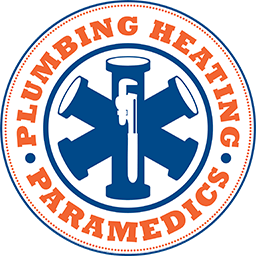
The average Canadian uses approximately 251 litres of water per day! This makes Canada the second-largest consumer of water per capita. By reducing your water consumption you can save money on your water bill and assist with water conservation in your area. It takes only a few simple changes for the savings to add up. The following are some suggestions for ways to reduce your usage and decrease your water bill.
Saving water in the bathroom:
- Use a garbage can for trash (tissues, floss, hair, wipes, feminine hygiene products) instead of flushing them down the toilet.
- Check toilets and faucets for leaks every six months. Undertake repairs, if needed.
- Install high-efficiency toilets. They use less than 1.3 gallons per flush. Not ready to purchase a new toilet? You can achieve the same effect by adding weights to the toilet tank.
- Add aerators to your faucets. This reduces the amount of water coming through the faucet while increasing the water pressure.
- Replace showerheads with low-flow models. They function similarly to faucet aerators.
- Take shorter showers. Showers account for 17% of home water use. Even shaving off a minute or two can lead to big savings. Consider turning off the flow while you lather up your hair. Switch it on again to rinse.
- Turn off the faucet while you shave or brush your teeth. Try filling the sink for shaving.
Saving water in the kitchen:
- Use your dishwasher. The average dishwasher uses 6 gallons per cycle, while water flows from your faucet at a rate of 2 gallons per minute. If it takes you more than 3 minutes to wash your dishes, you’re better off using a dishwasher. No dishwasher? Put the stop in the drain and fill the sink with soapy water rather than letting the water run.
- Replace your old dishwasher with a low water use dishwasher. Newer models will save on your energy bill as well.
- Only run the dishwasher when it’s full and don’t bother with pre-rinsing.
- Rinse vegetables in a pot or partially filled sink rather than under a running faucet.
- Keep a jug of drinking water in your refrigerator instead of running the tap to get cold water.
Saving water in the laundry/utility room:
- Upgrade to Energy Star appliances. Look specifically for the WaterSense and Energy Star seals which indicate that the machine runs on 35% to 50% less water and 50% less energy per load.
- Try a front-loading washer as it uses less water than a top-loading model.
- Wash only full loads of laundry. If you must wash a small or partial load, set the water-level appropriately.
- Service and repair your furnace humidifier regularly to make sure there are no water-wasting leaks.
- Service and repair your hot water tank if the drainage is leaking or if the water drains out of the line.
- Insulate your pipes. This will cut down on the amount of time you wait for your water to heat up before you wash your hands, take a shower or wash the dishes.
Saving water in the yard:
- Keep a watering can for plants under your kitchen sink. While you wait for the water to heat up, add it to the watering can.
- Use a broom, not the hose, when cleaning sidewalks, driveways and steps.
- Turn the hose off between rinses when washing the car.
- Use a car wash that recycles its water, rather than washing your car at home.
- Get a rain barrel to capture roof runoff. Use it to water your flowers, garden and lawn.
- Use drought-resistant plants (grasses, flowers, shrubs, trees) as they’ll require less water and care.
- Position sprinklers so that the water is going on the plants rather than on the sidewalk or driveway.
- Water in the morning or evening to reduce loss to evaporation.
- Avoid overwatering. Find out how much water your lawn actually needs and plan your schedule accordingly.
- Let the lawn grow to a height of two inches. This shades the roots and holds moisture in the soil so your lawn will require less water to remain green and healthy.
- Consider a mulching mower that leaves the lawn clipping behind to hold in moisture.
- Cover the pool/hot tub to reduce evaporation and require less frequent refilling.
There are many small changes you can make to cut your water usage, lower your bill and help protect our waterways for future generations. Enlist the help of your local plumber. They will be able to provide maintenance and/or repairs to your plumbing system and advice regarding efficient appliances, toilets and faucets.
Need maintenance and/or repairs? Want advice regarding efficient appliances, toilets and/or faucets? Call Calgary-based Plumbing Paramedics. Our plumbing technicians are friendly, informative and accommodating. Plumbing Paramedics hires only those we would trust in our own homes! Our certified plumbers can handle any plumbing task or problem!
Call us at (403) 452-2911 or Book Now an appointment.
When to Call a 24 Hour Plumber
Plumbing problems can strike at any time, often when you least expect them. A leaking pipe or a malfunctioning water heater can quickly turn into a full-blown emergency that needs immediate attention. Knowing when to [...]
Effective Drain Cleaning Techniques
Maintaining clean and clear drains is vital for the smooth operation of your plumbing system. Clogged or slow drains can lead to a host of issues, including unpleasant odours, slow water drainage, and even serious [...]
How Our Emergency Plumbers Handle Urgent Repairs
Plumbing emergencies can occur without warning, causing significant inconvenience and potential damage to your home. From burst pipes to sudden leaks, these issues require prompt and professional attention. Our emergency plumbers are ready to respond [...]






